June 20, 2025 | 05:38 GMT +7
June 20, 2025 | 05:38 GMT +7
Hotline: 0913.378.918
June 20, 2025 | 05:38 GMT +7
Hotline: 0913.378.918
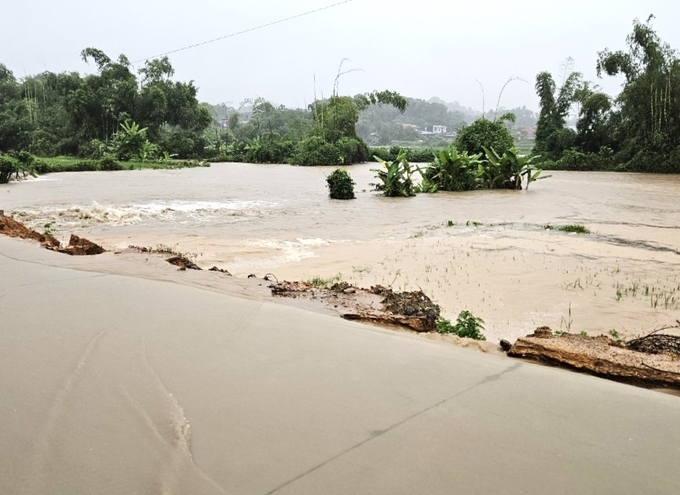
Thai Nguyen province frequently experiences various types of natural disasters, including heavy rain, storms, lightning, floods, flash floods, inundation and landslides. Photo: Pham Hieu.
In Vietnam, the impacts of climate change and natural disasters are increasingly extreme and unusual, both in intensity and frequency, negatively affecting people's lives and production activities. Therefore, the application of technical advancements and scientific technology is a solution that many localities are focusing on to improve the effectiveness of disaster prevention, response and damage reduction efforts.
As a unique mountainous region, Thai Nguyen province frequently experiences various types of natural disasters. According to statistics, in 2023, Thai Nguyen was hit by 12 instances of severe weather, including heavy rain, storms, lightning, floods, flash floods, inundation and landslides, etc. These disasters resulted in 3 fatalities and property damage estimated at approximately 979.000 USD.
In response to the urgent need to enhance the effectiveness of disaster prevention, response and damage reduction, Thai Nguyen province has recently placed significant emphasis on applying technical advancements and scientific technology in the fields of irrigation and disaster management.
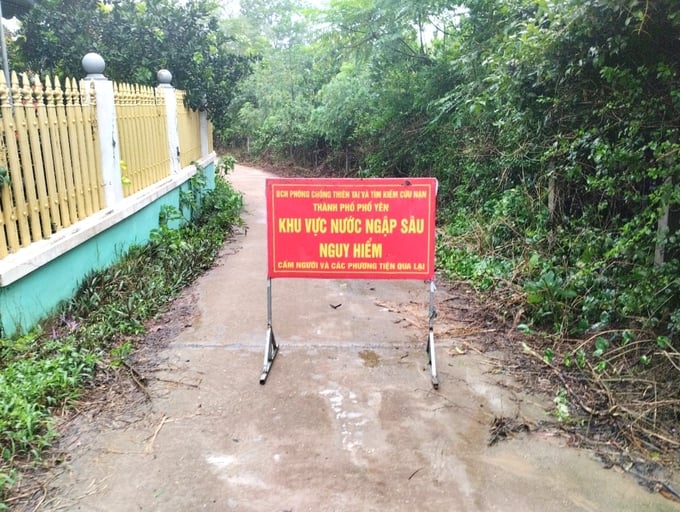
Authorities have placed warning signs to prevent people from entering hazardous areas. Photo: Pham Hieu.
According to Mr. Nguyen Tien Thinh, Head of the Irrigation Department of Thai Nguyen Province, the unit has recently developed a data management system and digital maps for nearly 1.300 irrigation projects across the province. This system supports state management functions; aids in the operation of irrigation projects; helps in water management, drainage, flood control for agricultural production and public safety. It also ensures the safety of dams and reservoirs and enhances proactive monitoring of drought, water shortages, flooding and waterlogging.
In addition, the Disaster Monitoring and Response Center at the Office of the Standing Committee for Disaster Prevention and Search and Rescue in Thai Nguyen Province has been established. It significantly improved the effectiveness of local disaster management and mitigation efforts. The implementation of monitoring and early warning applications has enabled more proactive coordination of preventive measures by local authorities, resulting in more timely and effective responses to disaster situations.
"In the context of increasingly complex and unpredictable natural disasters, the application of science and technology in disaster warning and forecasting plays a crucial role in the management and coordination efforts of the provincial People's Committee, relevant departments and local governments. This enables timely dissemination of information to the public, allowing people to be more proactive in prevention and response, thereby helping to reduce the damage to lives and property caused by natural disasters", Mr. Nguyen Tien Thinh emphasized.
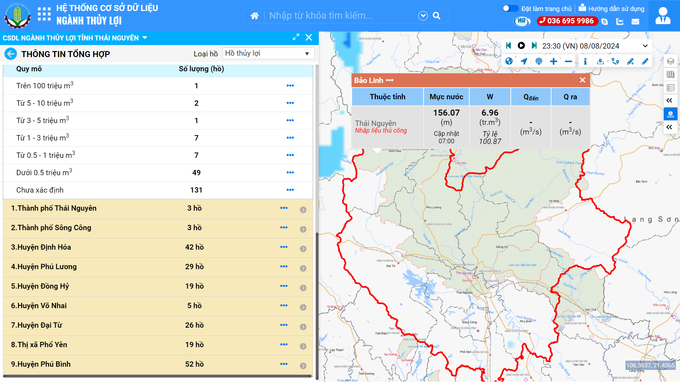
The database management system and digital maps for irrigation projects and disaster prevention in Thai Nguyen Province. Photo: Pham Hieu.
Currently, Thai Nguyen Province has approximately 260 reservoirs and nearly 530 various types of dams, ranking 5th in Northern Vietnam and 9th nationwide in terms of the number of reservoirs and dams. The province has 7 dike systems with a total length of about 48 kilometers, located in three areas: Thai Nguyen City, Pho Yen City and Phu Binh District.
In recent years, the Department of Agriculture and Rural Development of Thai Nguyen Province has identified the digitization of agricultural data as a strategic breakthrough in shifting from traditional agricultural production to agricultural economics. This includes the comprehensive implementation of scientific and technological solutions, particularly focusing on the application of advanced techniques and information technology in the fields of irrigation and disaster prevention.
Accordingly, the Department of Agriculture and Rural Development of Thai Nguyen Province has issued a plan to develop software for rapid reporting on disaster situations and damages within the province. Additionally, it continues to upgrade and build the database management system, digital maps for irrigation projects and disaster prevention.
At the same time, the province is developing an early warning information system that integrates data from automatic rain gauges and online cameras monitoring water levels at critical points. This system supports the management of various reservoirs, dams, dike systems and river basins in the province. Additionally, it coordinates with and provides disaster forecasting and warning updates to the Thai Nguyen Intelligent Operations Center (IOC).

Monitoring rainfall levels in different areas across Thai Nguyen Province through the system. Photo: Pham Hieu.
Currently, Thai Nguyen Province has over 350 small and large fords through local roads in various communes. Many key roads in these communes have fords that are prone to flooding. During the rainy season, high rainfall often leads to the flooding of these fords, directly affecting local transportation. In response, the Department of Agriculture and Rural Development of Thai Nguyen Province is implementing a video warning system to monitor flood-prone areas at fords and culverts on local roads, assisting residents in tracking flood conditions.
As the Office of the Standing Committee for Disaster Prevention and Search and Rescue of the province, the Thai Nguyen Irrigation Department has increased the frequency of adopting and applying forecasting and early warning technologies. This effort ensures more timely advisory support and provides guidance that aligns with forecast updates, warnings and the specific local situation.
All documents related to disaster prevention, response and recovery are now issued electronically. The process for receiving and transmitting directives has shifted from direct delivery to high-speed internet, ensuring information security.
Thai Nguyen Province has also implemented a database management system and digital maps for irrigation projects and disaster prevention, along with a monitoring and warning center. This system enhances the management of information and data for staff involved in irrigation and disaster prevention, making it more convenient, efficient and visually intuitive.

The software and information systems have made the management and operation of irrigation projects more convenient and effective. Photo: Pham Hieu.
On the other hand, these systems help residents easily view and search for information about irrigation projects and promptly receive disaster warning information for the province. Key features include providing essential data for managing local irrigation infrastructure; entering technical details of projects as changes occur or at specified intervals for timely reporting to management authorities; reporting hazardous conditions when risks are detected and facilitating communication with higher authorities and relevant departments to quickly and accurately address emerging issues in the area.
Currently, the national dike system extends over approximately 55,000 kilometers, with more than 2,700 kilometers categorized as level 3 to special, predominantly located in Northern and Central Northern Vietnam. However, an assessment of the dikes from level 3 to special in 2023 identified 288 critical and vulnerable points. There are over 274 kilometers of dikes lacking proper design elevation, 371 kilometers of dikes with narrow cross-sections, more than 185 kilometers of dikes experiencing frequent erosion and seepage and 233 kilometers of revetments in a state of deterioration and damage, with ongoing erosion.
Translated by Phuong Linh
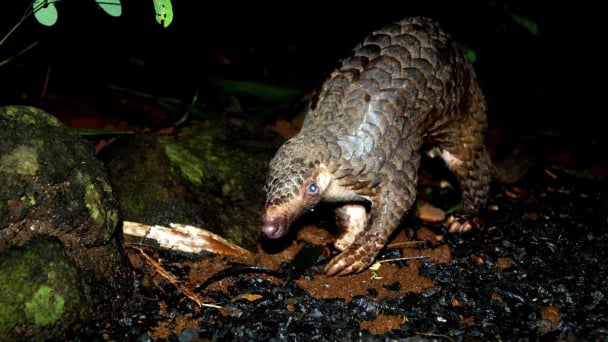
(VAN) Biodiversity is being threatened by traditional remedies made from wildlife. Traditional medicine and humans must change to live in harmony with nature.
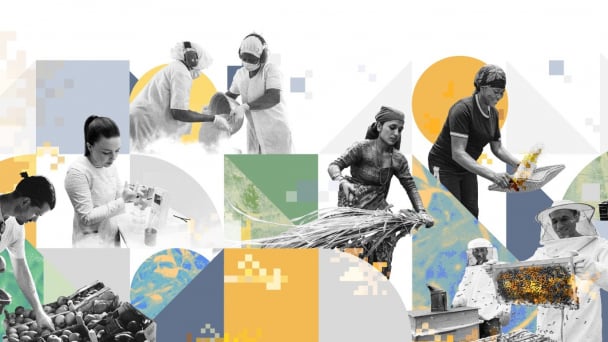
(VAN) Agrifood investment and finance solutions for people and the planet.

(VAN) Microplastic contamination has become pervasive in seafood, posing unprecedented challenges for food safety and marine ecosystems.
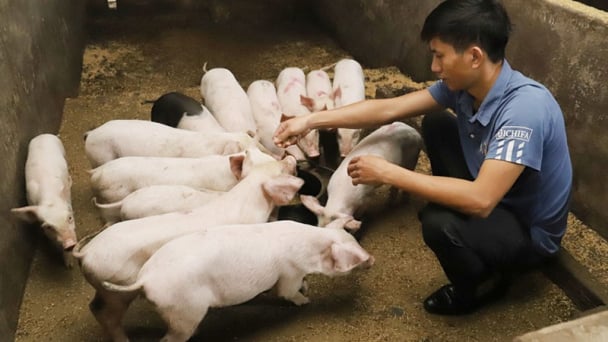
(VAN) Proactively using vaccines, combined with transport control and enhanced surveillance, is the only viable path toward biosecure and sustainable livestock production in Vietnam.

(VAN) Located in the southeast of Ho Chi Minh City, the Can Gio Mangrove Biosphere Reserve is considered the ‘green lung,’ a solid shield protecting the city.
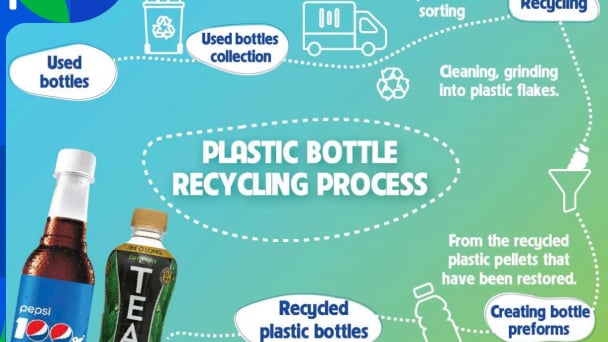
(VAN) To address plastic pollution, closing the plastic recycling cycle will bring significant economic and environmental benefits.
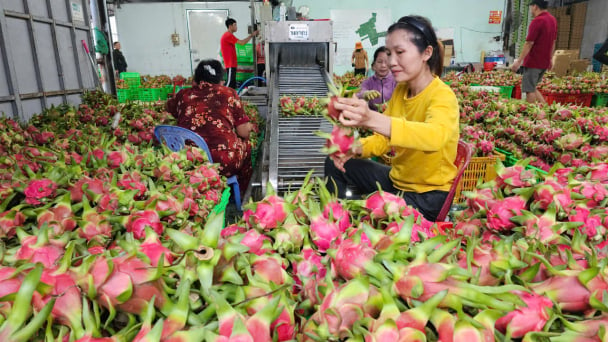
(VAN) According to the Binh Thuan Department of Industry and Trade, in the first five months of 2025, Binh Thuan's dragon fruit export turnover increased by 20.65% compared to the same period last year.